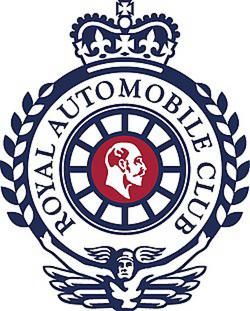Emancipation Run Archive: Meet Harry Lawson
)
As we prepare to celebrate the 125th anniversary of the Emancipation Run, we delve into the Club’s archives to view fascinating historic material from 1896, starting with meeting Henry John ‘Harry’ Lawson, the driving force behind that landmark event. He is shown here at the start at London’s Metropole Hotel, with his wife Elizabeth on the Panhard & Levassor on which he would complete the Run.
Harry Lawson first carved a career for himself in the bicycle industry. In 1879 he patented the chain-driven ‘Bicyclette’, for which he would become known as the ‘inventor of the safety bicycle’ and subsequently hailed as the father of the modern bicycle alongside John Kemp Starley.
Ever one to spot an opportunity or a trend, Lawson turned his attention to motor cars and motorised production in the UK, establishing the British Motor Syndicate in 1895 and, over the next few months, buying up dozens of patents and agreeing deals with manufacturers such as Peugeot Frères as part of his drive to take control of the fledgling British motor industry. That same year, together with Frederick Simms, he set up the Motor Car Club.
Lawson was riding high in 1896, having, with his business partner Terah Hooley, made a significant fortune through a number of company flotations, including that of the Dunlop Pneumatic Tyre Company; from this alone, Lawson made £500,000. In early 1896 he registered the Daimler Motor Co. Ltd. and became its Chairman
When the Locomotives on Highways Act was announced in August 1896, Lawson saw the perfect opportunity to promote his extensive automotive ventures. He would do so by celebrating the freedom that would arrive for British motorists when the new law came into effect at midnight on 13 November that year. On that historic date, the 4mph speed limit which had been in force since 1878 would be replaced with one of 14mph. Although many Local Government Boards would use their authority to reduce that to 12mph, it was nevertheless emancipation indeed!
Just hours after the new speed limit came into effect, the Motor Car Club’s Emancipation Day run left London on the wet, foggy morning of 14 November. Driven by Otto Mayer on the Panhard & Levassor, Lawson was at the front of the 33-car procession, heading into the history books. The racing driver Charles Jarrott, a spectator at in 1896, described the run as ‘The beginning of the movement, and the start in England of the great modern era of mechanical traction on the road.’
Within just a few years, however, Harry Lawson’s ‘flexible’ financial machinations and failure to sufficiently secure many of his patents caught up with him. Lawsuits, bankruptcy, a fine for fraud and a year’s hard labour in Wormwood Scrubs prison all followed and, when he died in 1925, he left just £99.







.resize-500x189.png)








